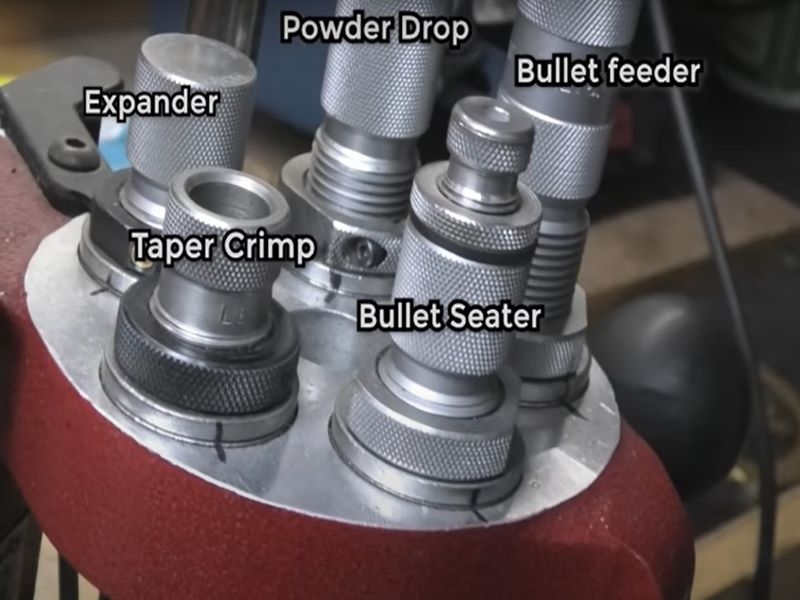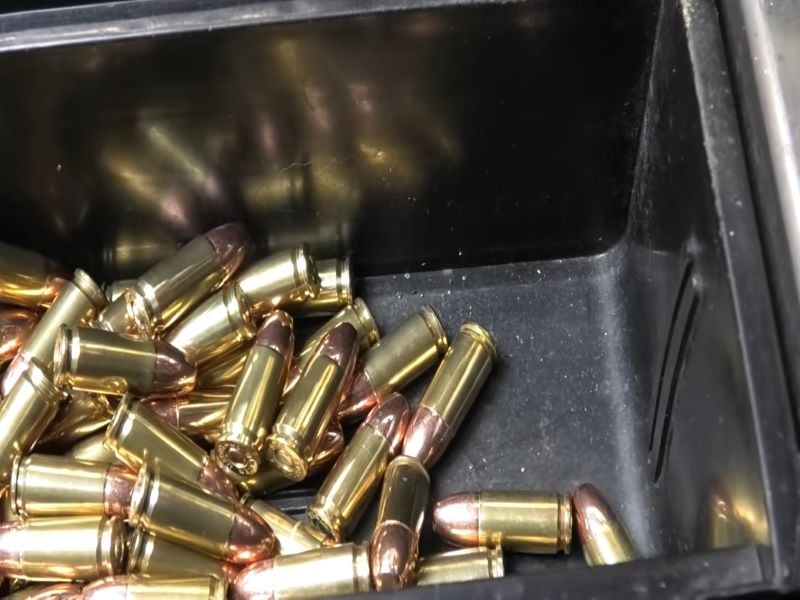When it comes to weighing pennies to the dollar for conventional centerfire handgun ammunition, the 9mm Luger is hard to beat. Even accounting for inflation, finding a box of 9mm is easier and cheaper than most offerings like 38 Special, 45 ACP, etc. As such, chasing down 9mm brass on the ground and reloading it might seem especially miserly. But if you do a lot of shooting, need a custom load for a custom task, or want to simplify your supply chain problems, reloading 9mm Luger for your favorite handgun is still a smart plan. In fact, like reloading any ammunition, it can be downright therapeutic.
High Caliber [YouTube Channel} shows us his setup to reload 147-grain subsonic loads for competition. He uses a Lee Single Stage Press, a Hornady Lock n Load progressive press, and a set of Hornady Custom Grade dies for his reloading setup.

The Lee Single Stage is a simple cast-iron rig that takes only one die at a time—a great way to get started with reloading but you will be changing out dies with every step in the process from decapping and resizing, bullet seating, and final crimping. High Caliber uses the Lee for the former process, using the Hornady decapping die to knock out the dead primer and resize the case to factory specs. This process also expands the case mouth to readily accept a projectile.
After this, it is wise to check for case failure. It is not uncommon to get cracked cases in the mix, especially if they had been run through the full-length resizer one too many times. This kind of damage is more likely when the fired brass came from a firearm with a generously oversized chamber.

Although one can be generous with brass cleaning, Higher Caliber’s setup uses a tumbler and stainless-steel media. I’ve used old coffee grounds and crushed walnut shells as cleaning media before, but stainless-steel media leaves little mess and is readily reusable. Curiously, the empty cases are not trimmed to conform to factory specs. While this is important when using bottlenecked rifle cases whose brass tends to flare outward, it is less important in conventional pistol ammunition.
After a thorough case cleaning, the preferred primers, projectiles, and powder are fed into the Hornady Lock n Load press, where the case expander die, powder drop, bullet feeder, bullet seater, and crimp die are set up. Under the head of the press is a set of the appropriate shellholders. When properly set up, a pull of the lever moves each case through each step of the process without having to change out dies or move shellholders like one would with a single-stage press. This setup is made for speed!

A final touch that is sometimes taken for granted is a good crimp in which the bullet, when seated to its finished depth, is fixed in place by reforming the brass around it. Crimping the brass into a bullet cannelure can keep the round from walking out of the case under recoil or from being pushed into the case. It is a concern especially important to magnum revolver loads and rifle rounds used in tubular magazines. Most 9mm projectiles do not have a cannelure and the cases headspace in a pistol’s chamber from the tapered mouth. As such, High Caliber uses a Lee taper crimp die to ensure proper function—and to prevent the minute possibility of the ammunition coming apart in a loaded magazine.


